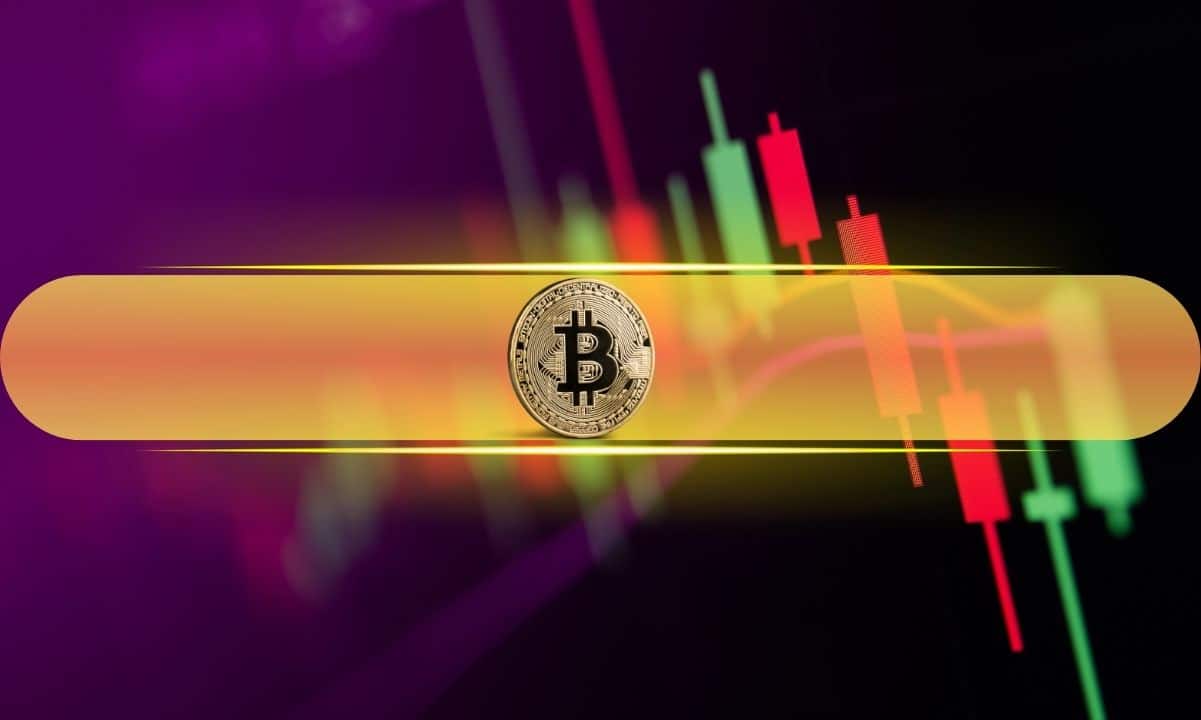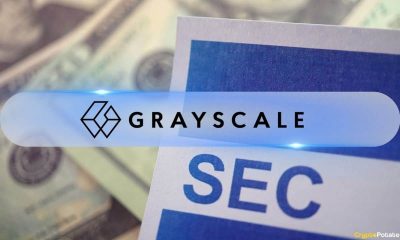Cryptocurrency
Binance introduced the Binance Airdrop Portal platform

Despite a busy beginning of the year with negative events, Binance does not stop working on new products. The world’s number one cryptocurrency exchange has launched the Binance Airdrop Portal platform, where users can get information about the airdrop supported by the site.
What is Airdrop? Airdrop is the distribution of tokens (including NFTs). There are other variations of the pronunciation and spelling, including airdrop, airdrop, and airdrop. The word airdrop in the crypto industry refers to a marketing campaign in which market participants can get free cryptocurrency.
Binance makes participation in airdrop more convenient
The platform collects detailed information about each airdrop – status, holding period, snapshot date, etc. Using the filter, you can select only current or future token giveaways, as well as find specific coins. Under each project there is a “Learn More” button. If you click it, you’ll get to a separate page with a more detailed overview, which describes the terms of the Airdrop, the number of assets to be distributed, and other details.
With the help of the Airdrop Portal users will be able to stay informed about the latest events and won’t miss out on profitable drops. According to Binance, the functionality of the platform will be updated and will soon be complemented by useful tools. The exchange also draws attention to possible discrepancies in the translation of the site and advises to rely on the English version.
Changpeng Zhao Exchange Seizes the Crypto Market
Despite the deplorable state of the industry after a prolonged crypto winter and FUD against Binance, the world’s largest centralized exchange has not only managed to maintain its dominant position, but also significantly increased the number of users. According to a recent Financial Times report, the platform’s share of all January spot transactions was more than 55%.
And while Binanse is still under close scrutiny by the US regulator and new rumors regularly emerge around the activities of exchange CEO Changpeng Zhao, it can be considered that the platform has managed to regain the customer confidence lost amid the November collapse of FTX.
Earlier we reported that the EU has changed its mind about banning anonymous cryptocurrency wallets as part of the fight against money laundering through cryptocurrencies.
Cryptocurrency
Gate Launches xStocks Trading Section, Bridging Crypto Finance and Global Capital Markets

[PRESS RELEASE – Panama City, Panama, July 3rd, 2025]
In July 2025, Gate, a global leading digital asset trading platform, officially launched its xStocks trading section, covering both spot and futures markets. The initial listings include 8 popular tokenized stocks, such as COINX, NVDAX, CRCLX, AAPLX, METAX, HOODX, TSLAX, and GOOGLX, enabling global users to trade tokenized stocks directly with crypto assets like USDT. Gate Alpha has also rolled out support for xStocks, listing MSTRx, CRCLx, SPYx, NVDAx, TSLAx, and AAPLx, further expanding users’ access to on-chain assets and strategic trading options.
This initiative not only diversifies investment channels for crypto users but also marks a new phase in the convergence of crypto finance and traditional markets. Gate is now the first platform to launch a futures market for tokenized stocks, establishing a fully closed-loop trading infrastructure at the intersection of digital and traditional finance.
Removing Barriers: Connecting Global Users to Wall Street
Gate’s xStocks trading section adopts a compliant, asset-backed tokenization model. All tokens are fully collateralized and represent publicly traded U.S. stocks. These tokens are freely transferable and compatible across multiple blockchains and ecosystems.
Unlike traditional brokers that require regional accounts, complex KYC, and fiat settlement, Gate’s tokenized stocks services are globally accessible and require no KYC, allowing users to invest using USDT and other crypto assets. This borderless trading model significantly lowers entry barriers for global participants, offering a seamless path for cross-border capital movement and global portfolio allocation.
The platform also supports 24/7 trading, fractional investment, and on-chain liquidity, breaking down traditional time and regulatory constraints, and delivering a highly flexible, decentralized investment experience that links TradFi and DeFi.
World-First Futures Market for Tokenized Stocks, Redefining Derivatives Boundaries
As the first platform globally to launch the futures market for tokenized stocks, Gate enables users to apply leverage and execute two-way strategies on U.S. stocks, all under a USDT pricing system, empowering more dynamic risk and return management.
The trading infrastructure has been fully optimized for this launch, with upgrades to matching engines, pricing models, and risk control systems. Tailored to the liquidity profiles of U.S. stocks and the behavioral patterns of crypto-native traders, the system delivers high responsiveness, strong compatibility, and robust user experience across both spot and futures markets.
A Strategic Leap Toward the Next-Generation Crypto Exchange
Gate’s expansion into tokenized stocks represents a key milestone in its long-term strategy of bridging traditional and future finance. By building crypto-native infrastructure for traditional assets, Gate is redefining how users access and interact with global capital markets.
Dr. Han, Founder and CEO of Gate, stated: “Our mission isn’t just to add a new asset class, but to transform the relationship between users and assets. We aim to create a truly global, borderless investment platform that empowers everyone to access financial opportunities worldwide.”
In 2025, Gate completed a major brand upgrade and transitioned to the unified domain Gate.com, marking a new chapter in its global strategy. The platform currently ranks Top 2 globally in spot trading volume, with continued strength in derivatives, liquidity depth, and user activity, reinforcing its position as a leader in global crypto financial infrastructure.
As the digital transformation of global finance accelerates, Gate’s launch of tokenized stocks offers a model for the industry and demonstrates a pioneering approach to integrating decentralized infrastructure with traditional capital markets, propelling the platform toward its vision as the next-generation crypto exchange.
About Gate
Gate, founded in 2013 by Dr. Han, is one of the world’s earliest cryptocurrency exchanges. The platform serves over 30 million users with 3,600+ digital assets and pioneered the industry’s first 100% proof-of-reserves. Beyond core trading services, Gate’s ecosystem includes Gate Wallet, Gate Ventures, and other innovative solutions, while its global partnerships extend to top-tier sports brands like Oracle Red Bull Racing in F1 and Inter.
For more information, users can visit: Website | X | Telegram | LinkedIn | Instagram | YouTube
Disclaimer:
This content does not constitute an offer, solicitation, or recommendation. You should always seek independent professional advice before making investment decisions. Gate may restrict or prohibit certain services in specific jurisdictions. For more information, users can read the User Agreement via https://www.gate.com/user-agreement.
Binance Free $600 (CryptoPotato Exclusive): Use this link to register a new account and receive $600 exclusive welcome offer on Binance (full details).
LIMITED OFFER for CryptoPotato readers at Bybit: Use this link to register and open a $500 FREE position on any coin!
Cryptocurrency
Bitcoin Price Shoots Toward $110K while Fartcoin and BONK Lead Meme Coin Gains: Market Watch

Bitcoin’s price is starting to heat up again, pushing towards the important $110,000 level and recording an increase of around 1.6% in the past 24 hours. This comes amid an even more impressive rally from certain meme coins such as Fartcoin and Bonk.
The total crypto market capitalization added around $50 billion during the day and is inching closer to $3.5 trillion. All of this happens as important regulatory changes are likely to take effect in the United States.
Bitcoin Price En Route to New All-Time Highs
At the time of this writing, BTC trades at around $109,500 which is around 2% below its all-time high achieved on May 22nd – about a month a go. And while we’re on the topic of statistics – the all-time low recorded on CoinGecko took place on July 6th 12 years ago. Since then, the cryptocurrency has returned the staggering 161,270% increase.
Anyways, back to the day-to-day news. BTC looks eager to take on its former highs and this is happening as the “One Big, Beautiful Bill” proposed by Donald Trump’s administration passed both Senate and the House votes in the past 24 hours.
It doesn’t include any direct crypto regulations, but it does intend to alleviate taxes on retail users and also introduce (or re-introduce, to be more precise) the so-called 100% bonus depreciation rule, which will allow Bitcoin mining companies to write off their equipment immediately, potentially allowing them to ramp up operations and increase the network’s hash rate, which has historically been bullish for the price.
In other BTC-related news, the BlackRock IBIT ETF, which tracks Bitcoin’s price, is now generating more fees than their legendary S&P 500 fund – a clear indication of the pent up demand and the fact that investors are willing to pay premium fees for exposure.
Fartcoin, Bonk Lead Meme Coin Gains
As you can see in the heatmap below, it’s a sea of green in the altcoins market today. Most of them are charting notable increases. Even the large-caps are up a lot – ETH gains 5.8%, DOGE – 7.7%, ADA – 8.5%, HYPE – 5.5%, SUI – 11.6%, and so forth.
But the most impressive gains for the day come from two of the more polarizing meme coins – Fartcoin and Bonk. The latter is today’s best performer, gaining about 20%, while the latter is up by 17%. Right behind them is Celestia (TIA), which gained 16%.
It’s one of those days where the worst-performing cryptocurrencies are stablecoins (ironically, of course), with just Fasttoken (FTN) and Bitcoin Cash (BCH) struggling to gain and trade flat.
Binance Free $600 (CryptoPotato Exclusive): Use this link to register a new account and receive $600 exclusive welcome offer on Binance (full details).
LIMITED OFFER for CryptoPotato readers at Bybit: Use this link to register and open a $500 FREE position on any coin!
Disclaimer: Information found on CryptoPotato is those of writers quoted. It does not represent the opinions of CryptoPotato on whether to buy, sell, or hold any investments. You are advised to conduct your own research before making any investment decisions. Use provided information at your own risk. See Disclaimer for more information.
Cryptocurrency charts by TradingView.
Cryptocurrency
Watch These 3 Ripple (XRP) Price Predictions in July

TL;DR
- Analysts see potential for further gains for XRP, with targets ranging from $2.80 to over $3.50 – while some even speculate on a parabolic rally similar to 2017.
- Despite the bullish outlook, XRP’s Relative Strength Index (RSI) nears 70, signaling potential overbought conditions and raising the chance of a short-term correction before any continued breakout.
What’s Next for XRP?
XRP has followed the overall resurgence of the cryptocurrency market in the last 24 hours, soaring to almost $2.30. Another factor that may have positively impacted its recent price performance is Ripple’s application for a license with the US national bank regulator, the Office of the Comptroller of the Currency (OCC).
According to multiple analysts, its ascent has yet to reach new dimensions. The X user CRYPTOWZRD noted that XRP closed the day “bullish,” setting $2.80 as the next resistance target.
“The intraday chart was highly volatile and bullish. It is now testing the $2.2550 resistance target. A successful breakout and a close above this level will offer the next long opportunity,” the trader added.
World of Charts believes an XRP breakout and retest has already been confirmed. The analyst expects a move towards $3 in the coming days, followed by a pump beyond $3.50 sometime this month.
The X user Maxi is even more optimistic. The crypto enthusiast believes XRP could replicate its performance in 2017 when it experienced a staggering 1,200% surge in a matter of days. Nowadays, a spike of that magnitude would drive the token’s valuation to a new all-time high of $30.
At the moment, such a rally seems quite unrealistic, considering that XRP’s market cap needs to skyrocket above $1.6 trillion. Currently, Bitcoin (BTC) is the only cryptocurrency whose capitalization exceeds that mark, while Ethereum (ETH) is far below with $313 billion.
Observing Some Indicators
Despite the bullish predictions, there are some red flags popping up suggesting the asset could head in the opposite direction in the short term.
The Relative Strength Index, which measures the speed and magnitude of recent price changes, has climbed to almost 70. Such readings generally mean that the valuation has increased too rapidly over a short period of time, signaling that it might be time for a correction.
If you’re curious about more indicators that could hint at XRP’s next move, check out our in-depth article here.
Binance Free $600 (CryptoPotato Exclusive): Use this link to register a new account and receive $600 exclusive welcome offer on Binance (full details).
LIMITED OFFER for CryptoPotato readers at Bybit: Use this link to register and open a $500 FREE position on any coin!

 Forex3 years ago
Forex3 years agoForex Today: the dollar is gaining strength amid gloomy sentiment at the start of the Fed’s week

 Forex3 years ago
Forex3 years agoUnbiased review of Pocket Option broker

 Forex3 years ago
Forex3 years agoDollar to pound sterling exchange rate today: Pound plummeted to its lowest since 1985

 Forex3 years ago
Forex3 years agoHow is the Australian dollar doing today?

 Cryptocurrency3 years ago
Cryptocurrency3 years agoWhat happened in the crypto market – current events today

 World3 years ago
World3 years agoWhy are modern video games an art form?

 Commodities3 years ago
Commodities3 years agoCopper continues to fall in price on expectations of lower demand in China

 Economy3 years ago
Economy3 years agoCrude oil tankers double in price due to EU anti-Russian sanctions





























